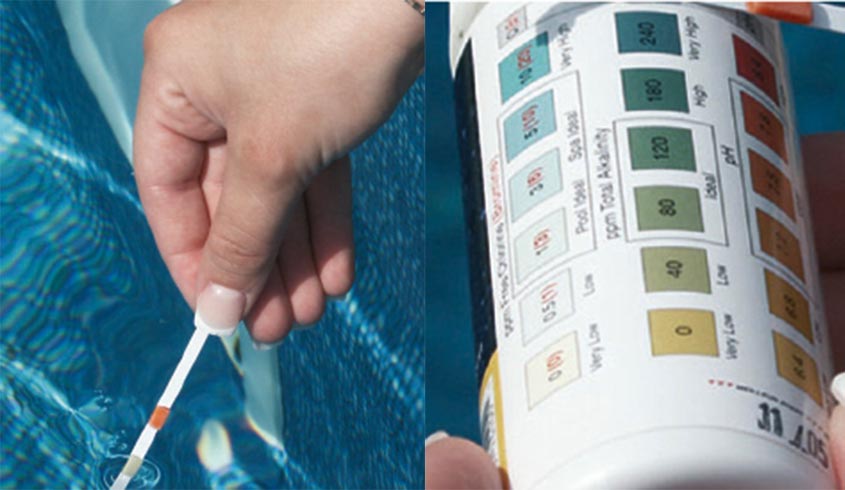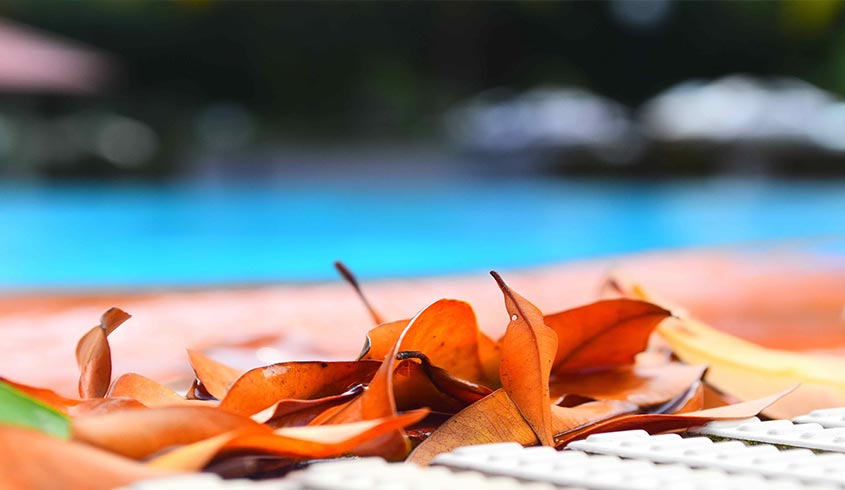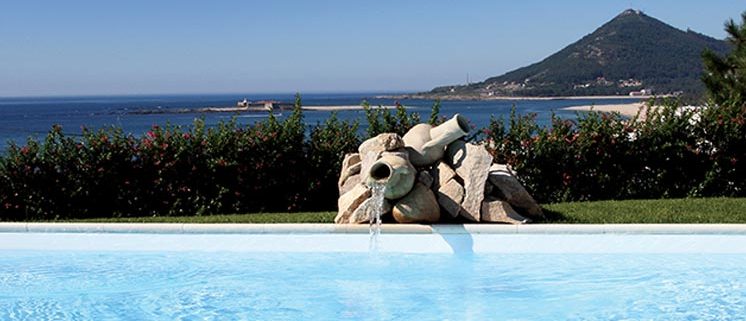In the cold weather, the pool water is free of algae and microorganisms, however, when the hot weather arrives, so the filth of the water begins to appear. It´s now time to start a new cycle, for you to reactivate a swimming pool.
Water stability can change rapidly, sometimes in just a few hours, and can become polluted due to impurities and heat. This will clear (see table below) all pool water. In addition, you should know that the higher the temperature, the longer the filtration time required. If the pool has a normal filtration process, healthy coatings, and a medium family use, and yet presents a turbid, charged and green water, then its filtration system must continuously be on 24/7.
Hint: The higher the temperature, the longer the clearance time required.
If you want to recover water that is cloudy or green, you must first remove (if any) the pool’s isothermal cover. Even during the winter, the impurities can infiltrate, by the action of wind and rain, in the pool water. Then remove all debris from both the water and skimmers’ baskets. Know it is the time to start the full filtration process. Washing the filter is also a key task in this process. Make a monthly wash off the sand to eliminate algae and other wastes that are retained there.
|
|
Filtration Table
|
|
Water Temperature
|
Filtration Hours per Day
|
|
Less than 10 ° C /50º F
|
2 hours
|
|
10 to 12 ° C / 50º to 53,6º F
|
4 hours
|
|
13 to 16 °C / 55,4º to 60,8º F
|
6 hours
|
|
17 to 24 °C / 62,6º to 75,2º F
|
8 hours
|
|
25 to 27 °C / 77º to 80,6º F
|
10 hours
|
|
28 to 30 °C / 82,40º to 86º F
|
15 to 20 hours
|
|
More than 30 °C / 86º F
|
20 to 24 hours
|
2 – Checking the pH levels
The water of a pool does not only need to be filtered but also to be treated (you can request this type of services). But before doing this, you should look at the pool water to find out what its pH level so you know the disinfectant rate to use. The purpose here is to be able to proceed with readjustments with greater accuracy.
The pH (potential of hydrogen) range goes from zero to 14. A pure or neutral water at 20 ° C (68º F) has a pH value of 7. If this value is less than 7 the water is considered acid. When the pH values are higher than 7 we have a alkaline water (basic).

For swimmers, who spend several hours in the water, the ideal pH value is to be as close as possible to the 7.4 (or between 7.2 and 7.6). To know the correct values you should have an analysis kit and regularly control the pH of your water, avoiding problems for you, your family and your pool.
Remember, if the water smells a lot of chlorine, it may mean that it has NO chlorine. And not excess, as you may think.
Organic matter, such as sweat and mucus, produce ammonia. These in contact with chlorine, combine and form chloramines, known as combined chlorine. The resolution of the problem involves the addition of doses of active chlorine in sufficient quantity to eliminate these chloramines.
3 – Disinfection: How much?
After the filtration, the quality of the water of a swimming pool must go through treatments (see some on this page) adapted for both disinfection, as well as for its balance and conservation.
Only a crystal clear water invites for a swim, but this may not mean that the water is in perfect condition. A pool with an excellent filtration process may not be acting against pathogenic germs, or act preventively against algae. Water can become green because the swimmer and nature are responsible for carrying polluting agents into the water. And these agents are greatly enhanced by the action of temperature. Thus, to fight these water enemies, water treatments are indispensable because, without them, the pool usage is prohibitive. You should watch and control the chlorine and pH of pool water at least twice a week. The pH should be between 7.2 and 7.6, and the chlorine should be maintained between 0.5mg / l and 1.5mg / l.
Note: Please note that the use of aggressive chemicals or reagents may, over time, damage:
-
the coating,
-
the ladder itself,
you should follow the advice given by your pool installer.
4 – The shock treatment
When you decide to put an end to the pool hibernation period and reactivate it for the summer, you may find some difficult to remove sources of pollution. And their removal is sometimes hard. As such, in order to return clean water to your pool, it is imperative to carry out an operation called Shock Treatment (Chlorine Choc is a typical product for this type of treatment).

Likewise, rapid warming requires such intervention. The increase in temperature creates a condition for the propagation of microorganisms and algae. These can quickly degrade the quality of your pool water.
If the water is cloudy or greenish, a shock treatment with continuous filtration work is required for a period of 2 to 3 days, as noted above. The chemical treatment provides for the application of products in the following proportions:
-
100 g of chlorine per 10 m³ of water,
-
after this process, it is advisable to perform a new pH check,
-
to this first treatment will happen to happen filtrations shorter, with the duration of 4 to 6 hours per day,
-
afterward, the filtration times will vary depending on the temperature and the pollution of the pool.
By following these steps you will reactivate your pool and enjoy it when and as you wish. Our biggest advice at this point is to never leave this procedure for summer time. Because it is simple and easy process when done at the right time.
If you liked this article, share it with your friends!






